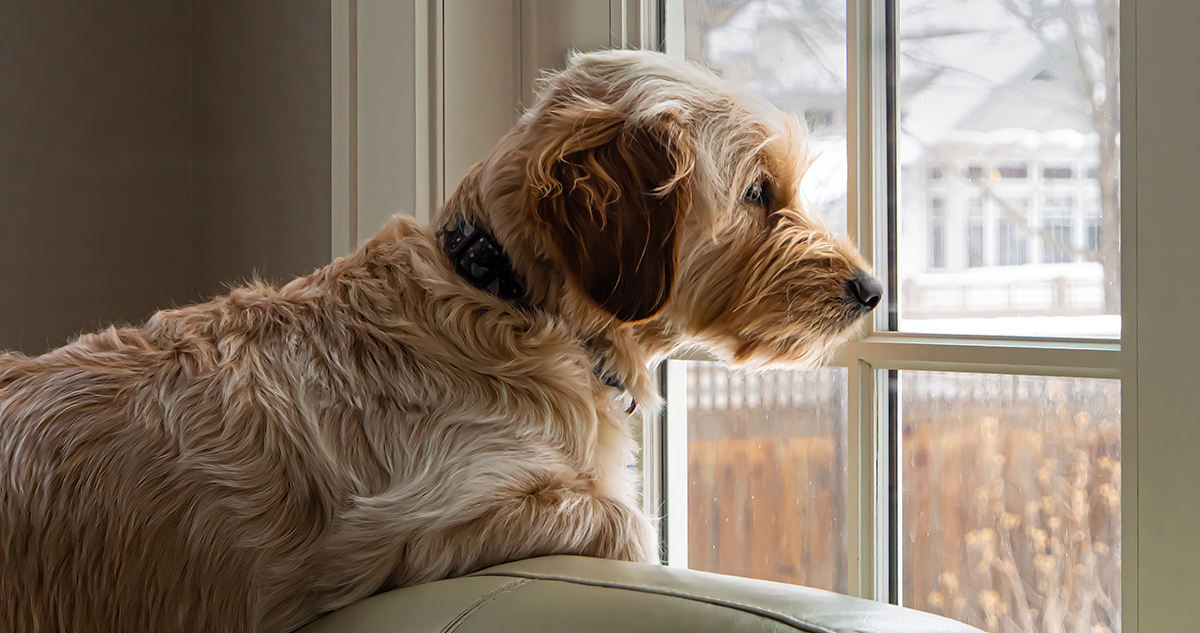
Separation anxiety is a common behavioural issue in dogs that can cause distress and discomfort for both the dog and their owner. When a dog experiences separation anxiety, they become anxious or stressed when they are separated from their owner or left alone. This can lead to destructive behaviours, excessive barking, and even self-harm. In this article we look at what might cause separation anxiety in dogs, and ways you can help your furry friend if you think they might be suffering with it.
What Causes Separation Anxiety in Dogs?
There are several factors that can contribute to the development of separation anxiety in dogs. These include:
- Lack of socialization: Dogs that have not been properly socialized may feel more anxious when left alone as they are not accustomed to being away from their owner
- Traumatic experiences: Dogs that have experienced traumatic events such as abandonment or abuse are more likely to develop separation anxiety
- Change in routine: Any sudden change in routine, such as a change in the owner’s work schedule or a move to a new home, can trigger separation anxiety in a dog
- Genetics: Some dogs may be genetically predisposed to developing separation anxiety.
Recognizing the Signs of Separation Anxiety
It is important for dog owners to be able to recognize the signs of separation anxiety in order to address the issue promptly. Common signs of separation anxiety in dogs include:
- Excessive barking or howling when left alone
- Destructive behaviours such as chewing furniture or scratching doors
- Pacing, panting, or drooling excessively
- Attempts to escape from confinement, such as breaking out of crates or digging under fences
- Excessive salivation or urination when left alone
If you notice any of these signs in your dog, it is important to consult with a veterinarian or a professional dog trainer to develop an appropriate treatment plan.
Treating Separation Anxiety in Dogs
Treatment for separation anxiety in dogs typically involves a combination of behaviour modification techniques and, in some cases, medication. Here are some strategies that can help alleviate separation anxiety in dogs:
- Gradual desensitization: This involves gradually increasing the amount of time the dog is left alone, starting with very short periods and gradually working up to longer durations. This helps the dog become more comfortable with being alone
- Counterconditioning: Associating positive experiences with being alone can help change the dog’s perception of being left alone. Providing special treats or toys that the dog only gets when they are alone can help create positive associations
- Medication: In severe cases, medication may be prescribed by a veterinarian to help reduce anxiety in dogs. These medications should always be used under the guidance of a professional
- Professional help: Consulting with a professional dog trainer or animal behaviourist can provide valuable guidance and support in addressing separation anxiety in dogs.
Separation anxiety in dogs is a common issue that can significantly impact the well-being of your do. By recognizing the signs of separation anxiety and implementing appropriate treatment strategies, it is possible to alleviate this condition and promote a healthier and happier life for your furry friend. Remember, patience and consistency are key when addressing separation anxiety in dogs, and seeking professional guidance can greatly enhance the success of the treatment process.


